-
Thermoelectric material converts heat waste to electricity
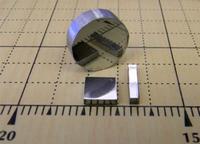
Scientists have developed a thermoelectric material which they claim is the best in the world at converting waste heat to electricity; this is very good news, since nearly two-thirds of energy input is lost as waste heat
-
-
Threat-recognition technology incorporates mind, machine

For soldiers operating in the field, the ability to detect threats from standoff distances can be life-saving; when advanced radar and drone coverage is not available, soldiers typically rely on their own vision to scan their surroundings; DARPA links human brainwaves, improved sensors, and cognitive algorithms to improve target detection
-
-
Harvesting fuel for nuclear reactors from the sea
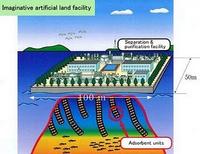
Uranium floats in Earth’s oceans in trace amounts of just 3 parts per billion. It is not much, but it adds up; combined, our oceans hold up to 4.5 billion tons of uranium — potentially enough to fuel the world’s nuclear power plants for 6,500 years; researchers propose ways to harvest this uranium
-
-
Dry-run experiments confirm key aspect of Sandia nuclear fusion concept
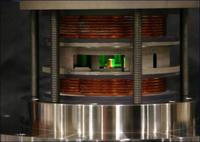
Magnetically imploded tubes called liners, intended to help produce controlled nuclear fusion at scientific “break-even” energies or better within the next few years, have functioned successfully in preliminary tests, according to researchers
-
-
DARPA’s legged robot beats Usain Bolt’s speed record
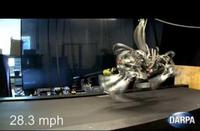
Usain Bolt, Olympic gold medalist and world record-holder sprinter, set the world speed record for a human in 2009 when he reached a peak speed of 27.78 mph for a 20-meter split during the 100-meter sprint; DARPA’s Cheetah robot, already the fastest legged robot in history, bested Bolt recently by clocking at 28.3 mph for a 20-meter split
-
-
U.K.’s first research institute to investigate the science of cyber security
A new U.K. academic research institute, aiming to improve understanding of the science behind the growing cybersecurity threat, was announced last week; GCHQ, the U.K. intelligence agency, says that the institute, which is funded by a £3.8 million grant, is part of a cross-government commitment to increasing the U.K. academic capability in all fields of cybersecurity
-
-
Nuclear waste-burning technology to make nuclear energy more appealing
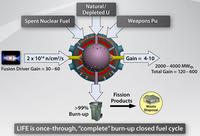
Toxic nuclear waste is stored at sites around the United States, and the need to store nuclear waste is widely considered to be a major disadvantage associated with nuclear energy; physicists have been granted a U.S. for patent for a novel fusion-fission hybrid nuclear reactor which would use nuclear fusion and fission together; the invention could drastically decrease the need for any additional or expanded geological repositories, making nuclear power cleaner and more viable
-
-
Nanotechnology sensor detects mercury in water, fish

When mercury is dumped into rivers and lakes, the toxic heavy metal can end up in the fish we eat and the water we drink; to help protect consumers from the diseases and conditions associated with mercury, researchers have developed a nanoparticle system that is sensitive enough to detect even the smallest levels of heavy metals in our water and fish
-
-
Radiation-enabled computer chips allow low-cost security imaging systems
With homeland security on high alert, screening systems to search for concealed weapons are crucial pieces of equipment; these systems, however, are often prohibitively expensive, putting them out of reach for public spaces such as train and bus stations, stadiums, or malls, where they could be beneficial; until now
-
-
Bolstering e-mail security
On the whole, security is not a primary concern for most day-to-day e-mails, but some e-mails do contain personal, proprietary, and sensitive information, documents, media, photos, videos, and sound files; the open nature of e-mail means that they can be intercepted and if not encrypted, easily read by malicious third parties
-
-
Canada funds digital technology to enhance maritime security, surveillance
New funding will allow exactEarth to improve its ability to locate more than 80,000 ships daily anywhere around the world and transmit this information quickly to its customers; this data is used within Canada and globally for a number of purposes, including enhancing maritime security and surveillance as well as search and rescue support
-
-
New search-and-rescue tool: remotely controlled cockroaches
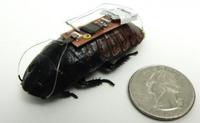
Researchers have developed a technique that uses an electronic interface to remotely control, or steer, cockroaches; remotely controlling cockroaches would allow first responders to create a mobile web of smart sensors that uses cockroaches to collect and transmit information, such as finding survivors in a building that has been destroyed by an earthquake
-
-
Protecting buildings from earthquakes by hiding them

Engineers have come up with an inventive and exciting idea for protecting buildings from earthquakes: hide them (the buildings, that is); the engineers say that placing specialized rubber under the building would diverts certain temblor shock waves, leaving the building virtually untouched by them
-
-
Airbus unveils its 2050 vision for “Smarter Skies”
Global aircraft manufacturer Airbus the other day released the latest installment of the Future by Airbus, its vision for sustainable aviation in 2050 and beyond; the vision looks beyond aircraft design to how the aircraft is operated both on the ground and in the air in order to meet the expected growth in air travel in a sustainable way
-
-
Students create low-cost biosensor to detect contaminated water
Diarrheal disease is the second-leading cause of death in children under five years old — killing as many as 1.5 million children worldwide every year; these startling statistics from the World Health Organization (2009) point to the reason why a group of undergraduate students from Arizona State University is working to develop a low-cost biosensor — a simple device that would detect contaminated drinking water
-
More headlines
The long view
Risk Assessment with Machine Learning
Researchers utilize geological survey data and machine learning algorithms for accurately predicting liquefaction risk in earthquake-prone areas.
Bookshelf: Smartphones Shape War in Hyperconnected World
The smartphone is helping to shape the conduct and representation of contemporary war. A new book argues that as an operative device, the smartphone is now “being used as a central weapon of war.”
New Approach Detects Adversarial Attacks in Multimodal AI Systems
New vulnerabilities have emerged with the rapid advancement and adoption of multimodal foundational AI models, significantly expanding the potential for cybersecurity attacks. Topological signatures key to revealing attacks, identifying origins of threats.
